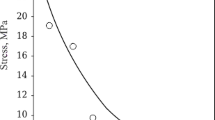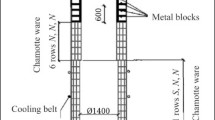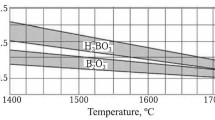Conclusions
The chemical reaction of the smelt and flux with the lining is associated with a modification of the chemical and phase compositions of the refractory, which leads to a change of the properties of the active zone. The formation of new, essentially highly refractory phases improving the refractoriness and chemical stability of the lining contributes to the disintegration on thermal shocks due to the different properties of the active and least changed zones.
The compact dross forming on the active areas of the lining prevents the further reduction of silica at the usual melting temperature, on the one hand, and leads to “overgrowing” of the lining, on the other hand.
If the melting process is intensified which entails a higher temperature in the channels of the furnace and a significant acceleration of the reaction of the alloy with the refractory it is expedient to use a semiacid lining.
Similar content being viewed by others
Author information
Authors and Affiliations
Additional information
Translated from Ogneupory, No. 10, pp. 26–31, October, 1969.
Rights and permissions
About this article
Cite this article
Grishenkov, E.E., Kudryavtseva, T.N. & Sorokin, N.A. Rammed linings after service in channel induction furnaces. Refractories 10, 625–629 (1969). https://doi.org/10.1007/BF01295355
Issue Date:
DOI: https://doi.org/10.1007/BF01295355




